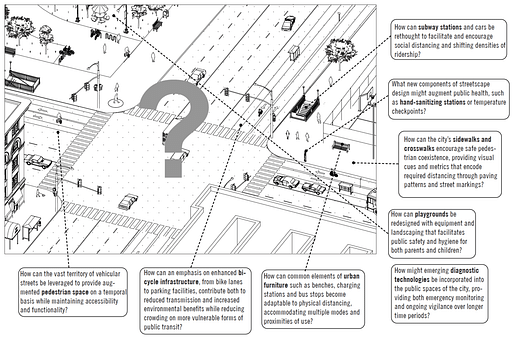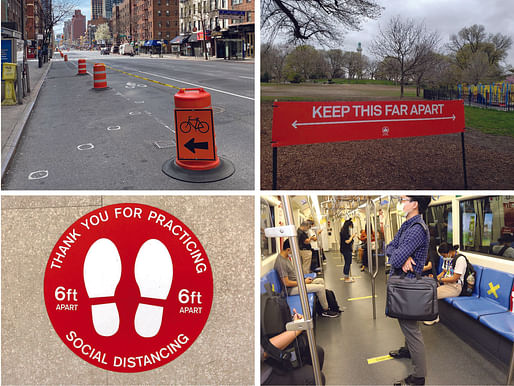

Princeton University School of Architecture Professors Paul Lewis and Guy Nordenson have been awarded a research grant by the Princeton University Funding Program for Rapid Novel and Actionable COVID-19 Research Projects fund to help propel the duo's work on "Manual of Urban Distance: Strategies for Reconfiguring the City," a guide that investigates "the challenges of physical distancing in urban settings and [explores] strategies that minimize the effects of potential resurgences of COVID-19 and other future pandemics."
According to the Princeton School of Architecture website, "Lewis and Nordenson's proposal focuses on the fact that distancing has been especially crucial in the dense urban environments of cities as the rate of infection in the world’s cities greatly outpaces that of suburban or rural areas. The density of the city, which has historically been considered its greatest asset, economically, socially and environmentally, is now precisely at odds with the realities of a pandemic, and has become a crippling vulnerability."

With their research, Nordenson and Lewis seek to concretize the reigning "behavioral" approaches to social distancing within the built environment via "a manual or toolkit of design analyses and spatial propositions" that seeks to learn from the urban changes put in place in East Asian cities, including Hong Kong, Taipei and Seoul, that have successfully halted the spread of the virus. The manual they seek to create will focus not only on proposing spatial strategies for limiting the spread of diseases in public spaces—like parks, buses, and shopping centers—but will also support the "very aspects of the city that we value—diversity, vibrancy, and communication," according to the school website.
Public transit systems, streetscapes, and parks will be of particular focus to the designers in this investigation.
The manual is set to be produced in phases that correspond to how the crisis plays out. After the current phase of the crisis ends, the duo will publish a manual highlighting lessons learned from this recent period. This publication will be followed with succeeding editions highlighting changes required from forthcoming pandemic episodes.
The manual represents one of several COVID-19 research endeavors being undertaken at Princeton.
In March, Princeton SOA Assistant Professor Mitch McEwen spearheaded the school's Personal Protective Equipment (PPE) fabrication capabilities, an effort that is ongoing. McEwen's Black Box Research Group brings together designers and fabrication technicians to produce much needed protective masks, face harnesses, shields, Tyvek gowns, test kids, temporary hospitals, and even respirators and ventilators.
No Comments
Block this user
Are you sure you want to block this user and hide all related comments throughout the site?
Archinect
This is your first comment on Archinect. Your comment will be visible once approved.